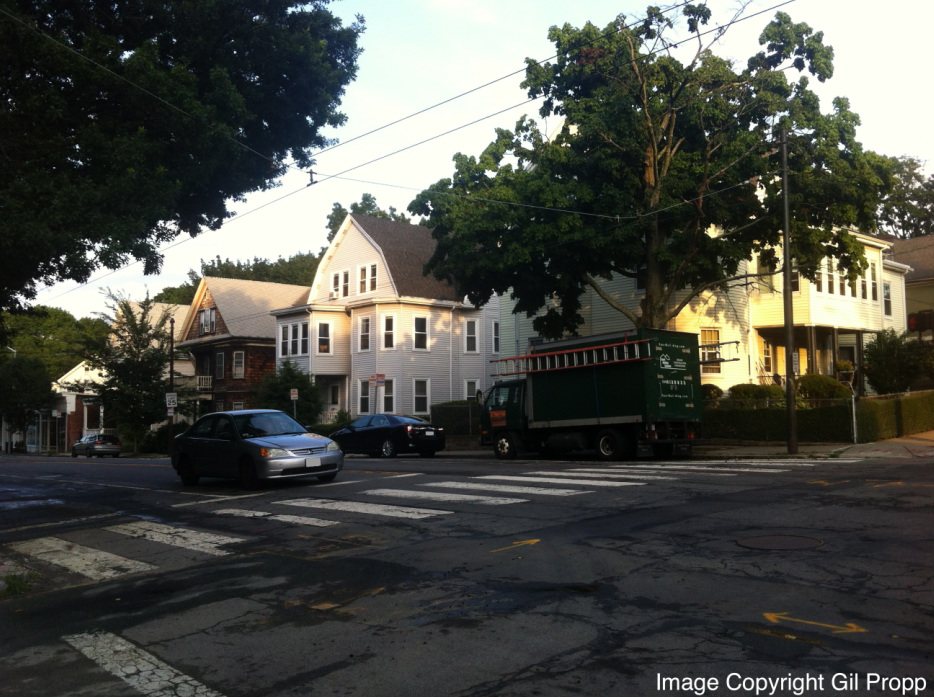Trackless Trolleys

Trackless trolleys in Waverley Square in Belmont. Note that unlike regular buses, trackless trolleys run on overhead wires like streetcars do.
The four trackless trolley routes that operate in Boston today are remnants of many more routes that once ran in the city. When the Boston Elevated Railway, and later the Metropolitan Transit Authority, began to phase out streetcars in favor of more maneuverable buses that were not confined to tracks and could weave through ever-increasing car traffic, they initially replaced many routes with trackless trolleys rather than buses. Trackless trolleys made sense because they used the electric wires that were already in place, and all the officials had to do was put up a second wire to complete the circuit for the vehicles to run. (Because trackless trolleys do not have metal wheels, their electronics work differently from streetcars—read "How A Streetcar Works" for more information.) Plus, trackless trolleys were more spacious than buses, and self-propelled diesel buses were still a developing technology in the late 1930s and 1940s, when most streetcar routes were replaced with trackless trolleys, that could only be trusted for shorter routes.
Huron Avenue, where the 72 trackless runs. Note that there are no tracks in the street, yet there are overhead wires.
Also note the double wires—more on that in "How A Streetcar Works."
Also note the double wires—more on that in "How A Streetcar Works."
By the late 1940s, 43 routes had been converted from streetcars to trackless trolleys. As streetcars began to show their age, trackless trolleys became a fixture in many of Boston's streetcar suburbs; by the 1950s, Dorchester hosted the most trackless trolley lines in Boston!
In the 1950s in East Boston, trackless trolleys were a common sight. Pictured above is the present-day Wood Island Blue Line station in 1952, then called Day Square. Note double overhead wires and trolley poles on buses. Image courtesy Dirty Old Boston/Ward 1 East Boston.
Once diesel buses became reliable enough to handle longer routes, overhead wires began to seem antiquated and unsightly, and trolleys that were confined to one route seemed significantly limited compared to buses, which could drive anywhere on any road..
T buses at the Blue Line's Orient Heights station in the 1960s. Note the lack of overhead wires or tracks.
Image courtesy Dirty Old Boston/Ward 1 East Boston
Image courtesy Dirty Old Boston/Ward 1 East Boston
Likewise, the development of the diesel bus led to the conversion of most trackless trolley routes to bus routes and the deposition of the trolleys' overhead wires. In 1960, the MTA determined that the only trolley cars that would run in Boston would run on their own private right-of-way or in a tunnel. Such policy resulted in multiple trackless trolley routes being eliminated., and by 1964, the only trackless trolley routes that remained were the four that remain today, the 71, 72, 73 and 77A.



